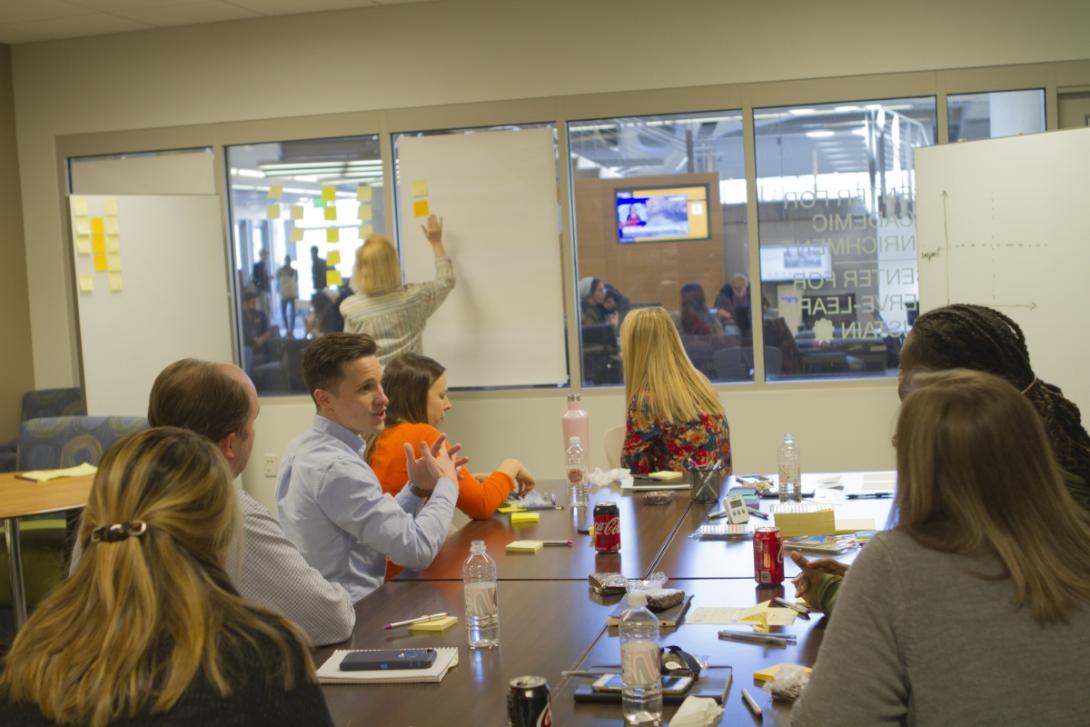On March 14th, OUE 2020 hosted a problem-solving exercise with several members of the OVPUE professional staff.

Decision making can be one of the most problematic parts of the problem-solving process. The problem with anything that requires creative thinking is that it’s easy to get lost or lose focus. That's why Roberta Berry, the OUE 2020 committee chair, was very interested in finding a method to help OUE departments quickly develop solutions to day-to-day problems. Enter the "lightning decision jam (LDJ)."
The LDJ method works by replacing all open, unstructured discussion with clear process. "At first this will absolutely feel weird, I’ve seen the skepticism on the faces of designers who are used to battling through passionate back-and-forths with colleagues until eventually one person gives up, or someone says 'let’s test it'," process creator Jonathan Courtney said. "Freedom to discuss might seem conducive to creativity, when it’s in fact the enemy. Structure and Discipline create the Freedom needed to be creative."
The method is very simple, only takes between 25-40 minutes, and can be used for anything that requires a group of people to make decisions, solve problems, or discuss challenges.
During the pilot session with OVPUE, the participants were charged with writing down problems that occur in the office. Each participant had 7 minutes to write as many as examples as they could and when time ran out they were given an opportunity to explain their choices. Next, the participants quickly voted on the challenges they consider to be the most important to solve. (It's important to note that voting rounds happened in silence and no one was able to plead their case for their problems/solutions.) After the most important challenges were selected, the group was given another 7 minutes to come up with as many solutions as they could, followed by another round of voting. The last step of the process involved placing the top solutions onto an impact/effort scale (pictured left). The two solutions with the highest impact and the lowest amount of effort were then split into actionable steps.
In a short amount of time the OVPUE team was able to define important challenges, produce solutions, and prioritize what to execute—almost entirely without discussion. After a very successful pilot, all of the participants agreed that this would be a worthwhile expereince for other departments. If you want to learn more about LDJ - it's best to see it in action. Watch this VIDEO to see how the process works.
